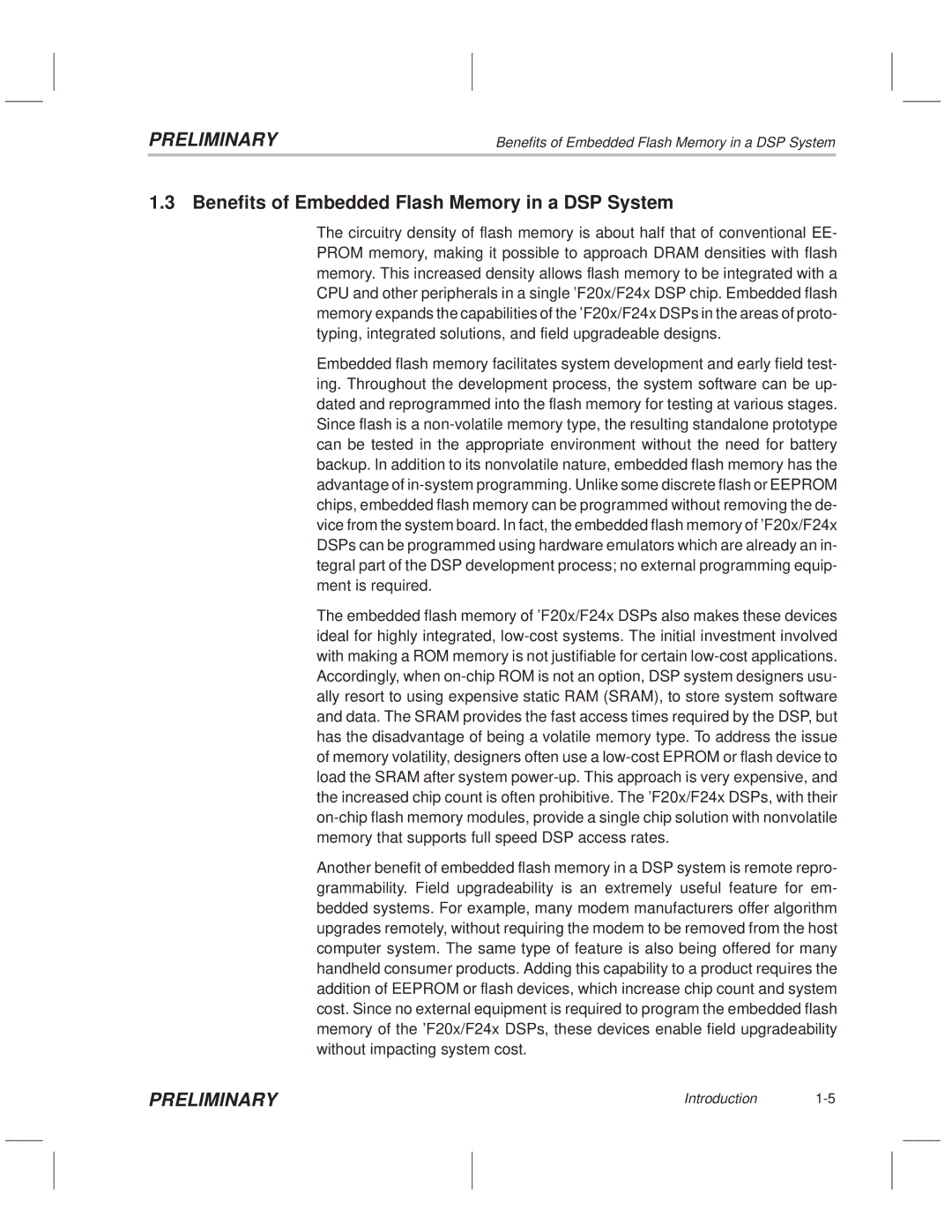
PRELIMINARY
Benefits of Embedded Flash Memory in a DSP System
1.3 Benefits of Embedded Flash Memory in a DSP System
The circuitry density of flash memory is about half that of conventional EE- PROM memory, making it possible to approach DRAM densities with flash memory. This increased density allows flash memory to be integrated with a CPU and other peripherals in a single 'F20x/F24x DSP chip. Embedded flash memory expands the capabilities of the 'F20x/F24x DSPs in the areas of proto- typing, integrated solutions, and field upgradeable designs.
Embedded flash memory facilitates system development and early field test- ing. Throughout the development process, the system software can be up- dated and reprogrammed into the flash memory for testing at various stages. Since flash is a
The embedded flash memory of 'F20x/F24x DSPs also makes these devices ideal for highly integrated,
Another benefit of embedded flash memory in a DSP system is remote repro- grammability. Field upgradeability is an extremely useful feature for em- bedded systems. For example, many modem manufacturers offer algorithm upgrades remotely, without requiring the modem to be removed from the host computer system. The same type of feature is also being offered for many handheld consumer products. Adding this capability to a product requires the addition of EEPROM or flash devices, which increase chip count and system cost. Since no external equipment is required to program the embedded flash memory of the 'F20x/F24x DSPs, these devices enable field upgradeability without impacting system cost.
PRELIMINARY
Introduction
